There’s endless things to do on the Wild Atlantic Way.
In fact, there are 180 Wild Atlantic Way Discovery Points along the 2,500km of the Wild Atlantic Way route!
And that’s just the Discovery Points – the WAW has hundreds of other famous and often missed attractions, as you’ll discover below!
The most popular things to do on the Wild Atlantic Way
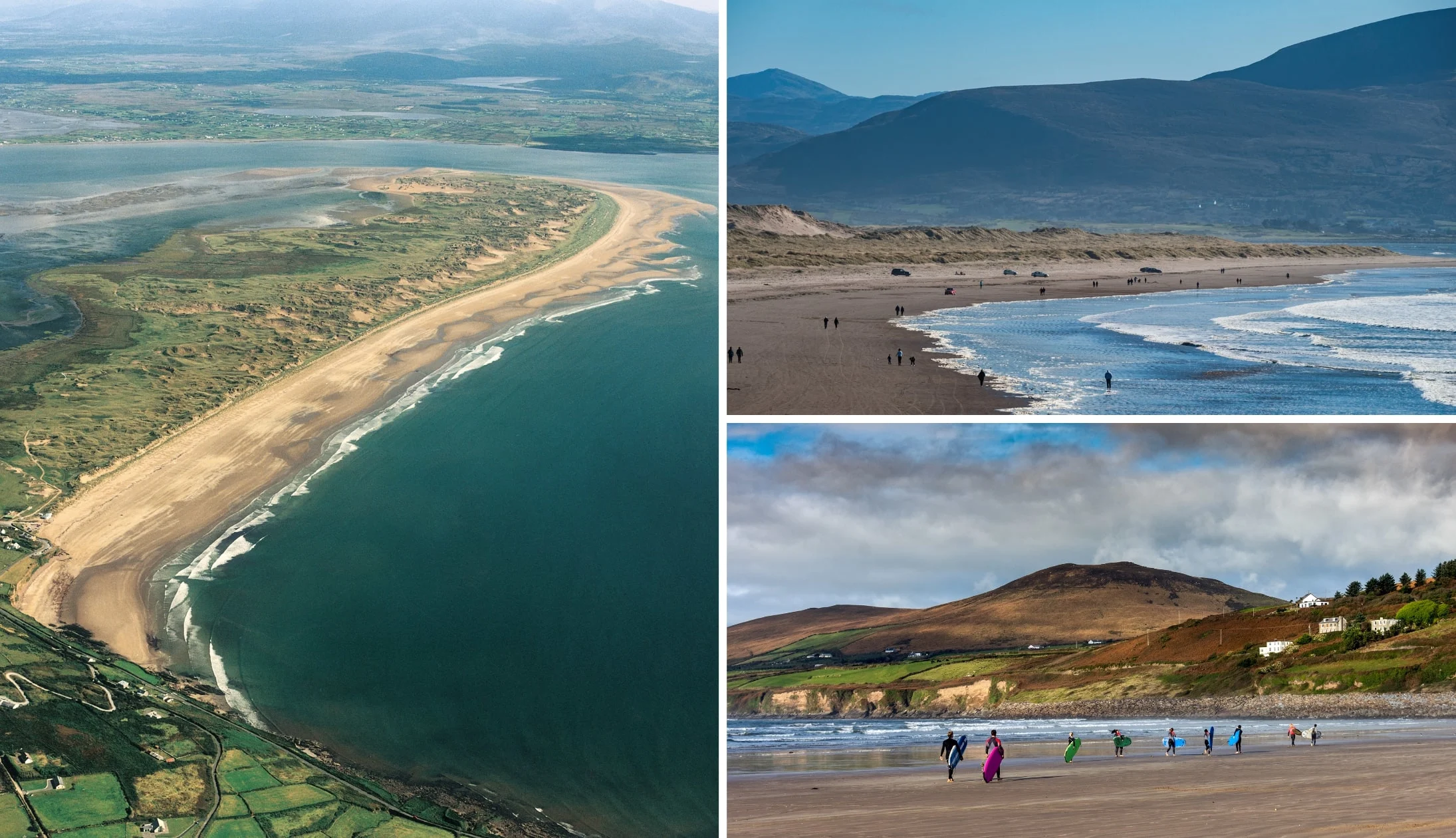
Photos via Shutterstock
Below, you’ll find a mix of the ‘well know’ Wild Atlantic Way attractions, like Moher, to the often-missed attractions, like Slieve League.
You’ll also get an insight into the peninsulas, the hikes and the corners of the Wild Atlantic Way that have graced the cover of millions of postcards.
1. The Cliffs of Moher
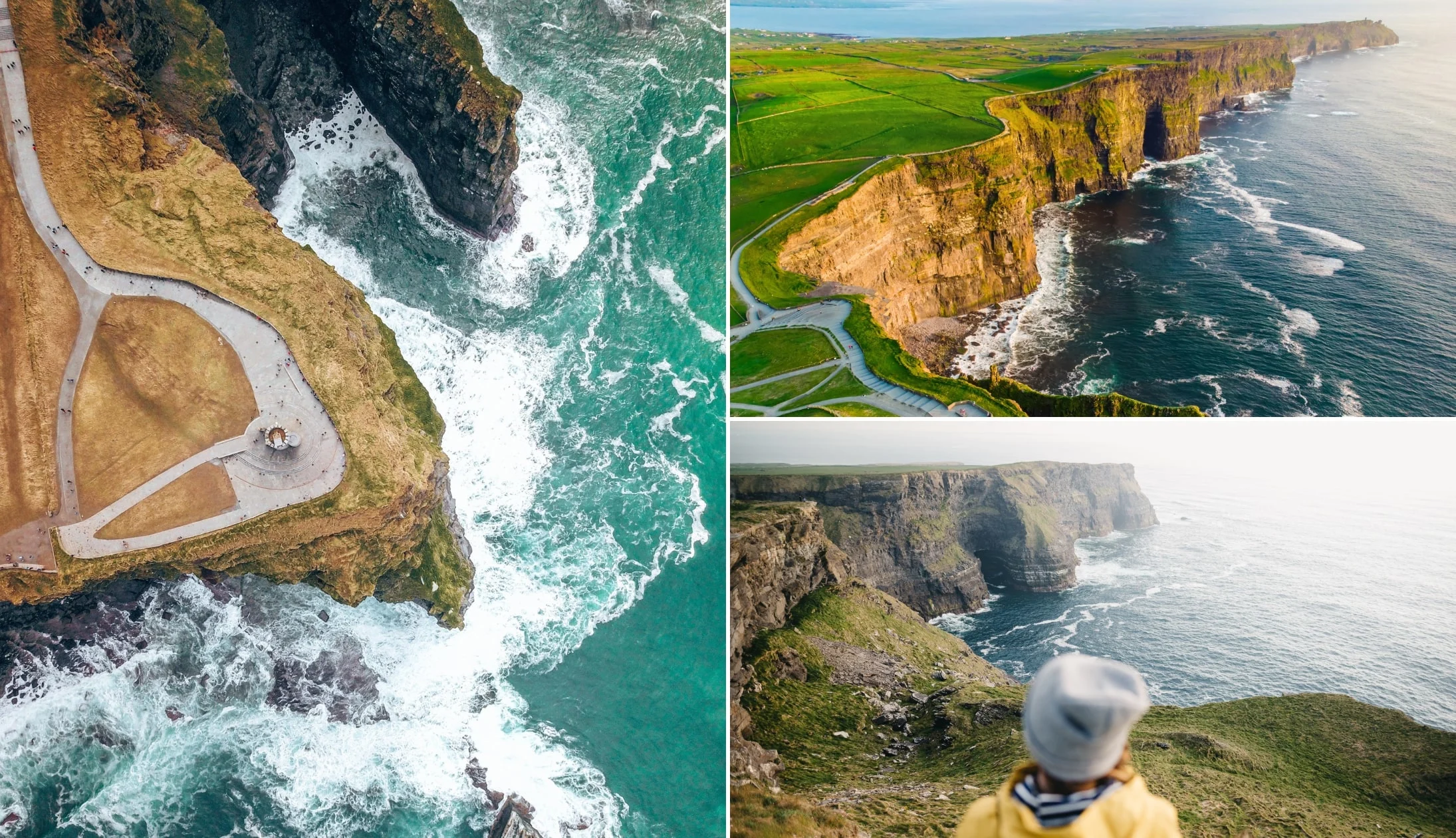
Photos via Shutterstock
The Cliffs of Moher are located between Doolin and Lahinch in County Clare. These spectacular cliffs span 14km and rise 120m above the Atlantic Ocean.
On a clear day atop the cliffs, visitors can see all the way to the Maumturk Mountains in north Galway, the Aran Islands in the west and Loop Head in the south.
You can view the cliffs by boat, hike up to the cliffs from Doolin or visit the official visitors centre at the top of the cliffs which is open year round.
Related read: Check out our 11-day Wild Atlantic Way itinerary
2. Killarney National Park
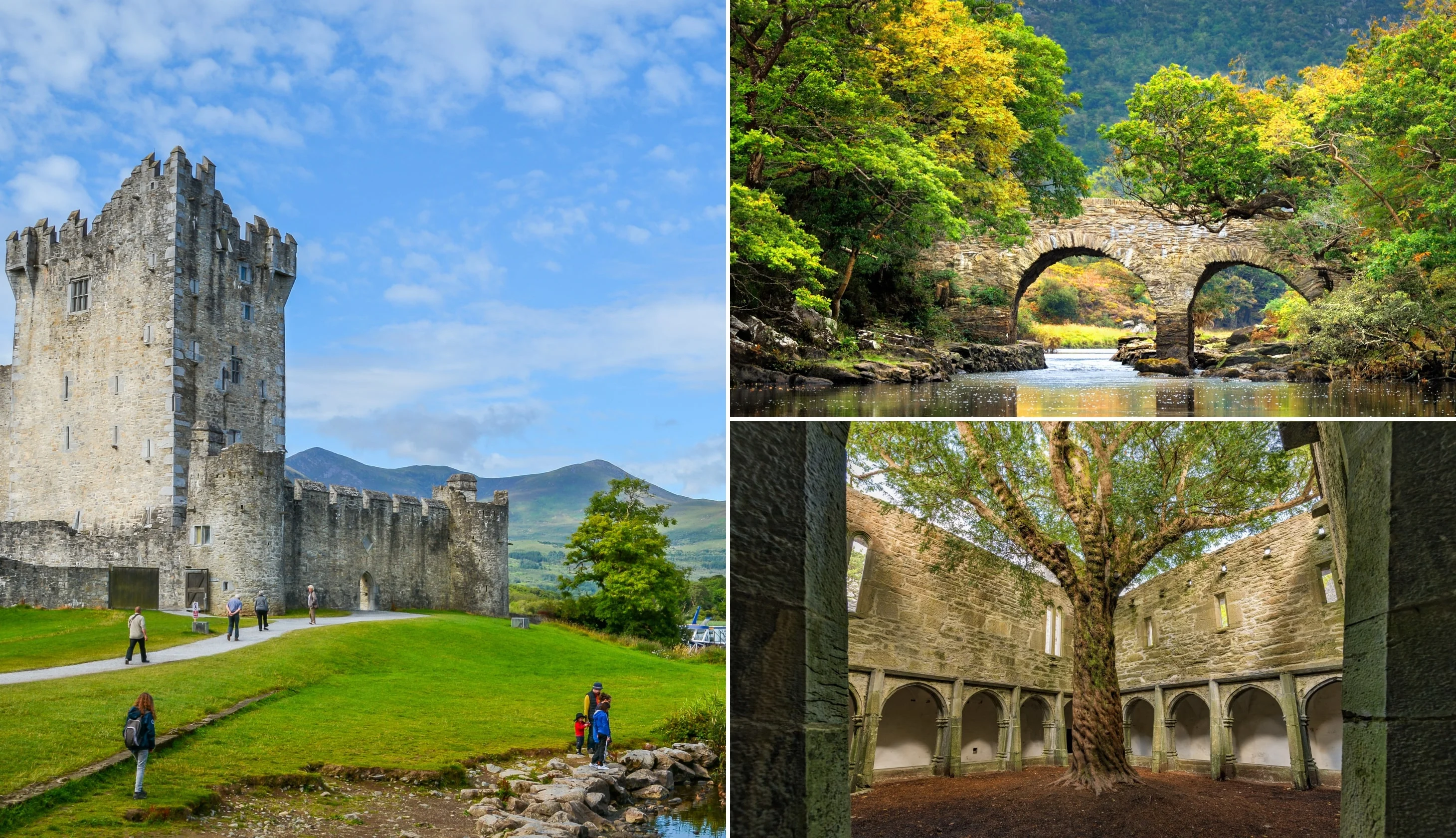
Photos via Shutterstock
Killarney National Park encompasses 26,000 acres of woodlands, lakes and mountains. The park contains oak and yew groves of international importance, has the only red deer herd on the island and is the most extensive area of native forest in Ireland.
This national park was the first of its kind in the Irish free state when the Muckross Estate was donated to the government in 1932.
Muckross House and grounds are a focal point in the park and the fully furnished house is open to visitors. The park includes lakeside walks, forest trails and mountain summits.
3. The Slieve League Cliffs
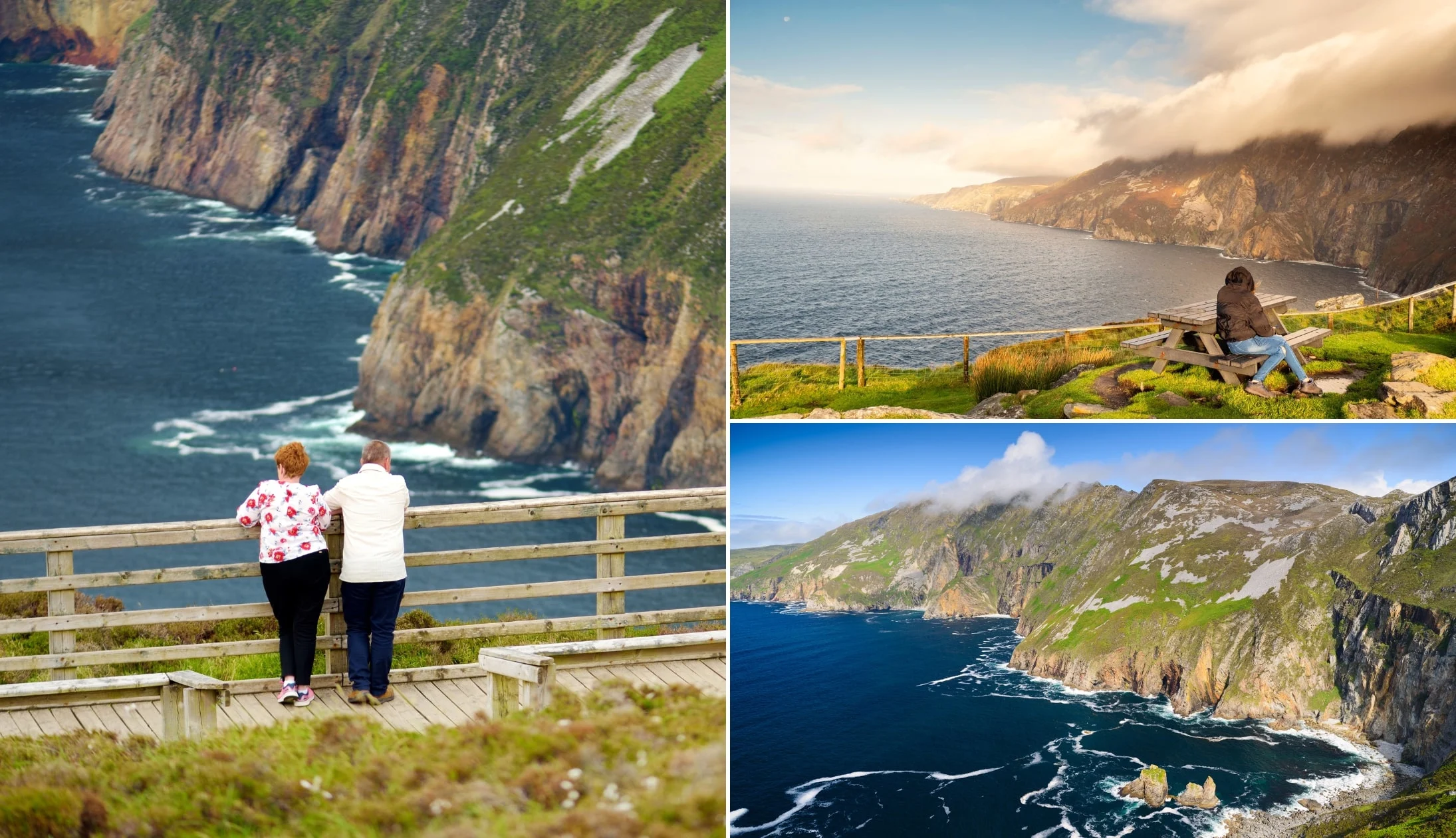
Photos via Shutterstock
The Slieve League Cliffs on the coast of Donegal are the highest cliffs on the island of Ireland (the highest cliffs in the country are Croaghaun sea cliffs on Achill Island).
The cliffs rise 601m above the Atlantic Ocean and are a spectacular site. The short walk from the main car park to the cliffs takes you past an ‘EIRE’ sign from WWII.
At the viewpoint you can continue on and very carefully hike along the cliffs or simply enjoy the view from there.
The weather along the coast here is incredibly fickle so even we recommend that you stay awhile and watch the mist rise and fall over these breath-taking cliffs.
Related read: Check out our interactive Wild Atlantic Way map with attractions plotted
4. Connemara
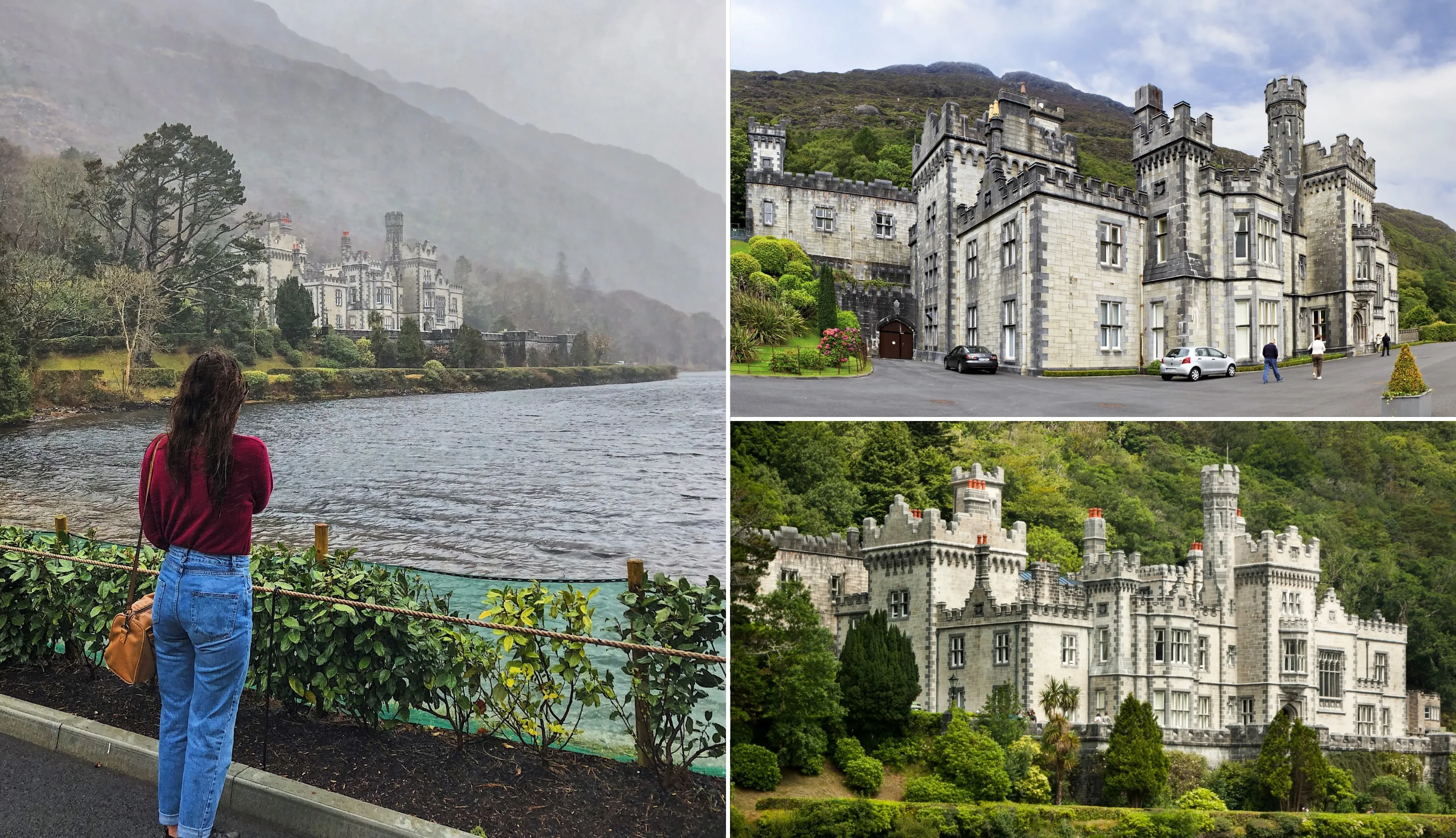
Photos via Shutterstock
Connemara is home to some of the most popular things to do on the Wild Atlantic Way.
This is the area along the Atlantic Coast north of Galway City that is known for its incredible natural beauty as well as its strong connections to Irish language and culture.
The coastline of Connemara is made up of peninsulas, inlets and islands. The area is the largest Gaeltacht region in Ireland with around 22,000 daily Irish speakers living there.
Connemara National Park is located in the northwest of the region. It encompasses over 2,000 hectares of mountains, bogs and grasslands. Diamond Hill outside of the village of Letterfrack is one of the most popular hikes in the national park.
5. The Burren
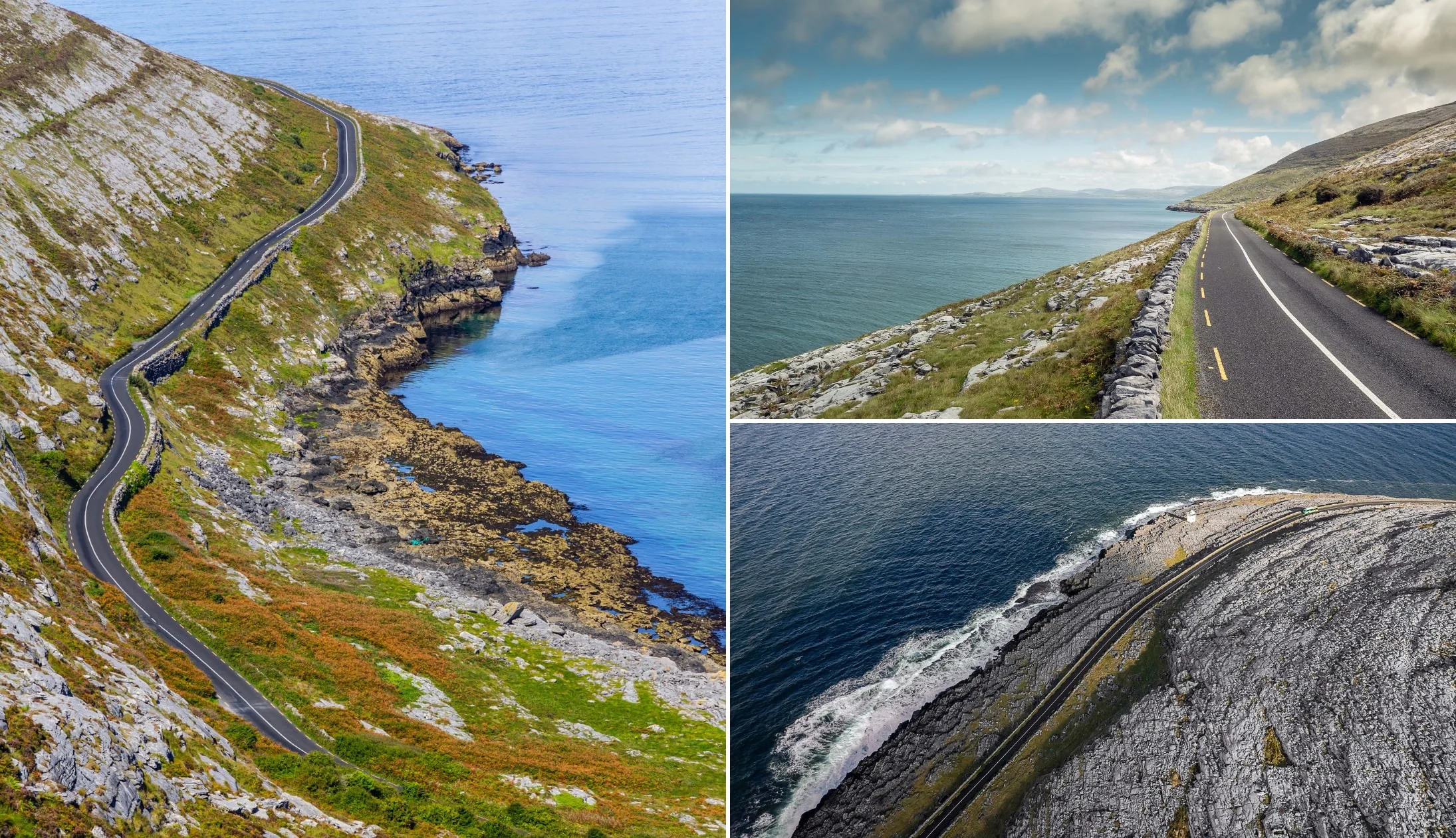
Photos via Shutterstock
Located on the coast of Clare, the name ‘Burren’ comes from the Irish ‘Boirinn’ which means ‘rocky district.’ The Burren is considered to be a ‘krast’ landscape.
This entire region was shaped by glaciers during the last ice age, exposing the pitted limestone rock that makes up such a large part of the landscape.
The Aillwee Caves near Ballyvaughan show another side of this unique landscape. Aside from the natural beauty, the Burren is also home to quite a few historic and prehistoric sites such as Corcomroe Abbey and Poulnabrone Dolmen.
6. The Dingle Peninsula

Photos via Shutterstock
The Dingle Peninsula is another place that’s home to some of the best things to do on the Wild Atlantic Way, which is why it’s one of the most popular tourist destinations along the west coast.
The town of Dingle (from which the peninsula gets its name) is a colourful seaside village with incredible pubs, great food and is just a short drive away from most of the best spots on the peninsula.
Some of these attractions include the Slea Head Drive which takes in Dún Chaoin Pier with its incredible views of the Blaskets, the village of Ballyferriter, Mount Brandon and Gallarus Oratory.
7. Kinsale
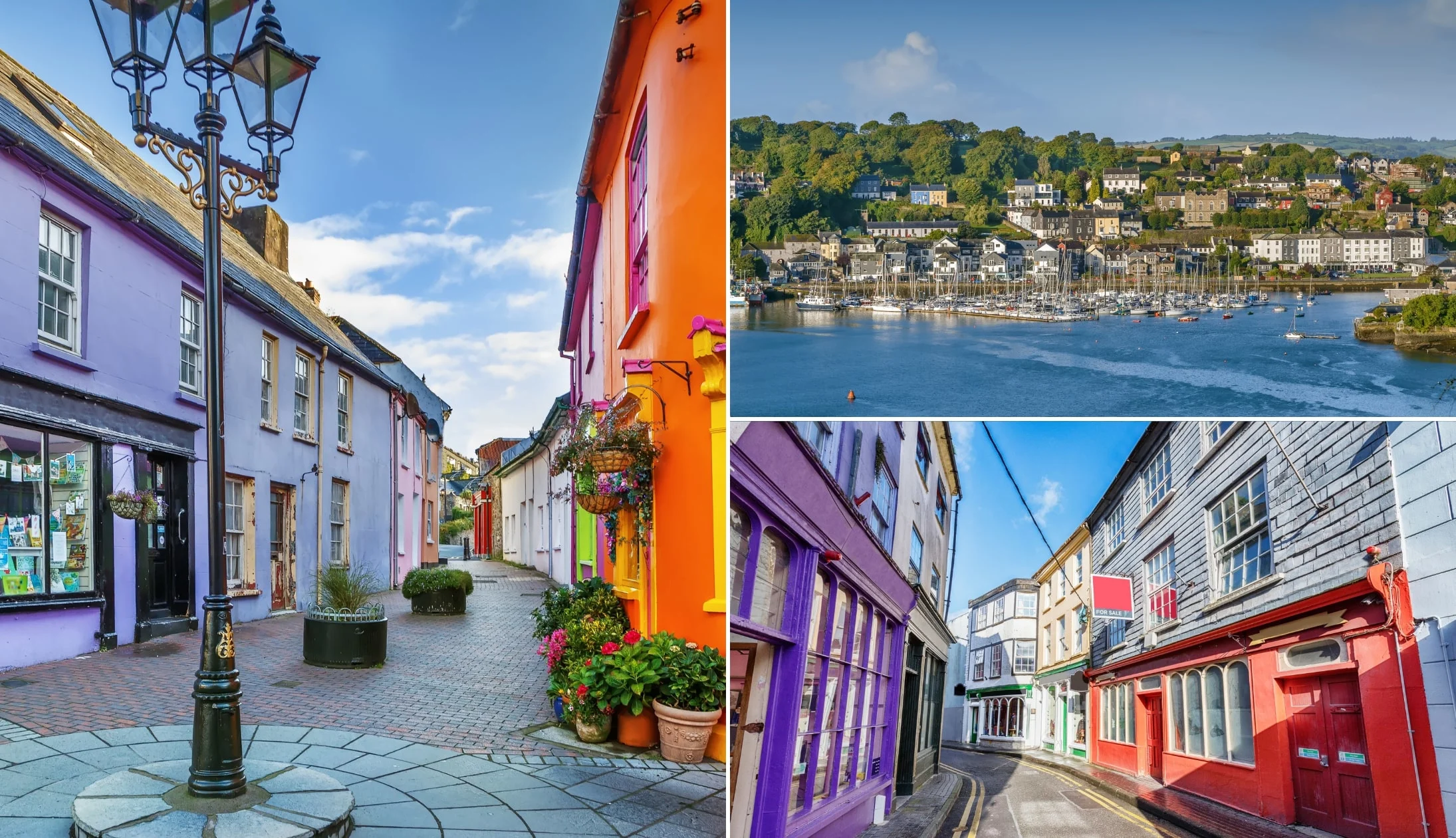
Photos via Shutterstock
Kinsale is an idyllic seaside town in West Cork and the start (or end point) of the Wild Atlantic Way. This historic fishing town was the site of the Battle of Kinsale in 1601 which marked an end to the Nine Years War.
A couple centuries later, the Lusitania sank just off the coast from here near the Old Head of Kinsale.
This town has some great pubs and restaurants (including one with a Michelin star) as well as great seaside walks like the Scilly Walk out to Charles Fort.
8. West Cork
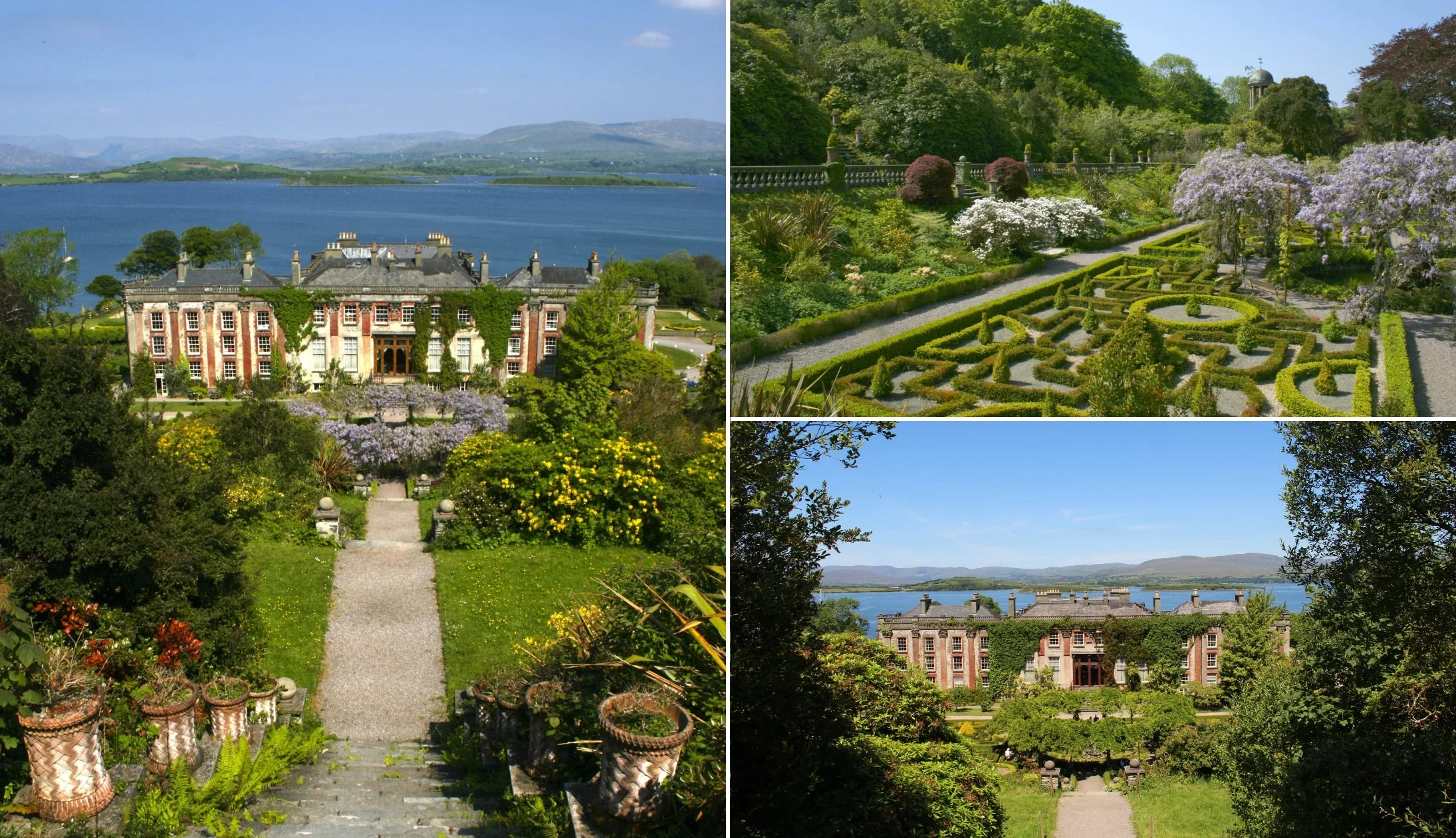
Photos via Shutterstock
Don’t let the podcasts cloud your opinion of this incredible part of Cork, West Cork is a beautiful part of the country with colourful villages, spectacular gardens and ancient structures.
The beautiful villages of Skibbereen, Clonakilty and Bantry have great pubs, delicious restaurants and comfortable accommodation.
Garnish Island, just off the coast of West Cork in Glengarriff harbour is home to one of the most spectacular gardens in the country.
The stone circle in Drombeg and the Altar Wedge Tomb outside of Schull are incredible examples of just some of the prehistoric structures in this area.
9. The islands
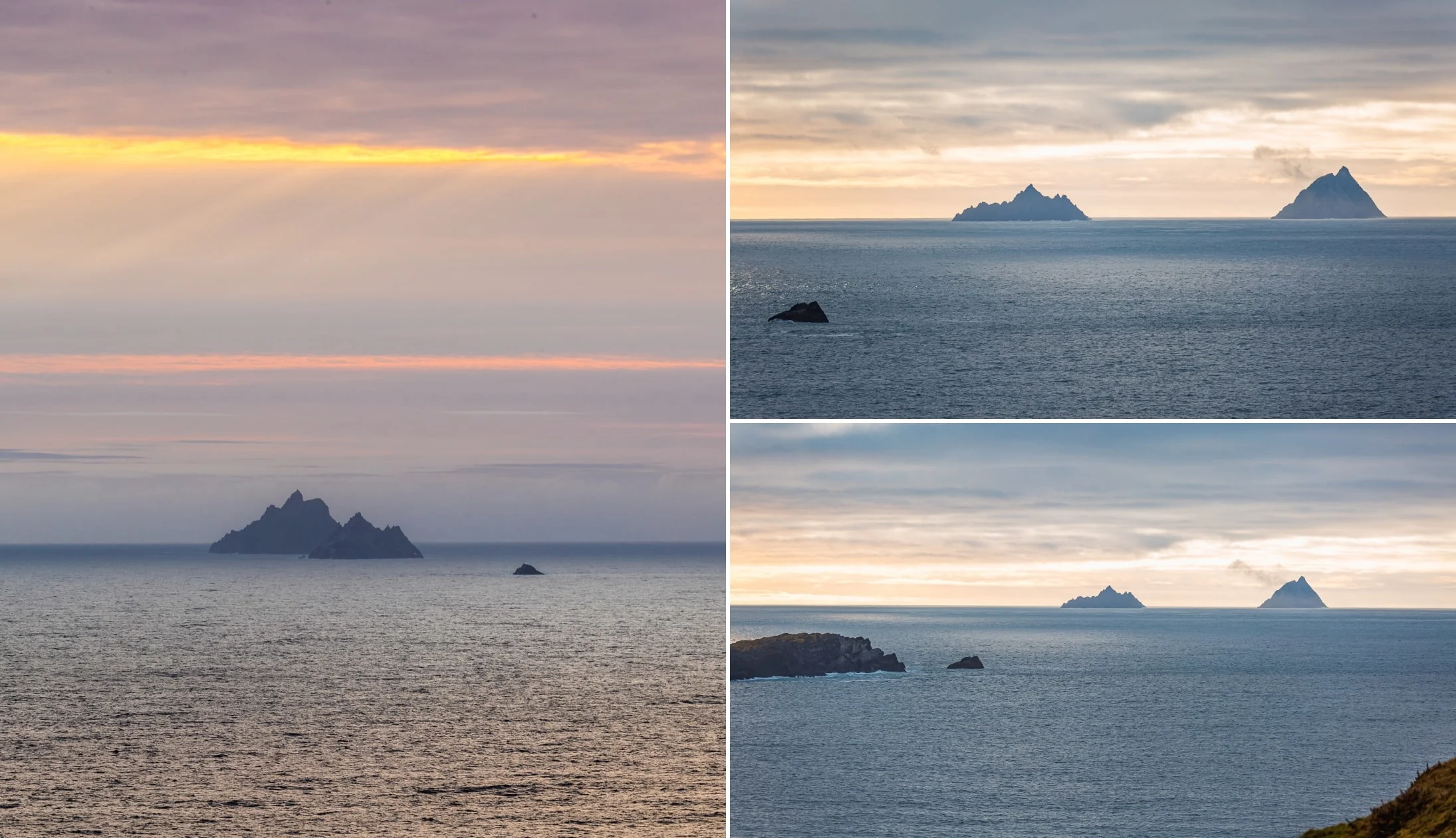
Photos via Shutterstock
Some of the most overlooked things to do on the Wild Atlantic Way involve its islands.
The west coast of Ireland is dotted with islands from Spike Island in the south to Tory Island in the north. Many of these islands that are still inhabited are Gaeltachts and are among some of the most isolated places in Europe.
The Aran Islands are the most well known islands off the west coast and are easily accessible via boat or plane and are a great place to spend a day or 5.
The uninhabited Blasket Islands off the coast of Kerry have spectacular beaches, incredible views of the Kerry coast and wonderful hikes around the island.
10. Hikes galore
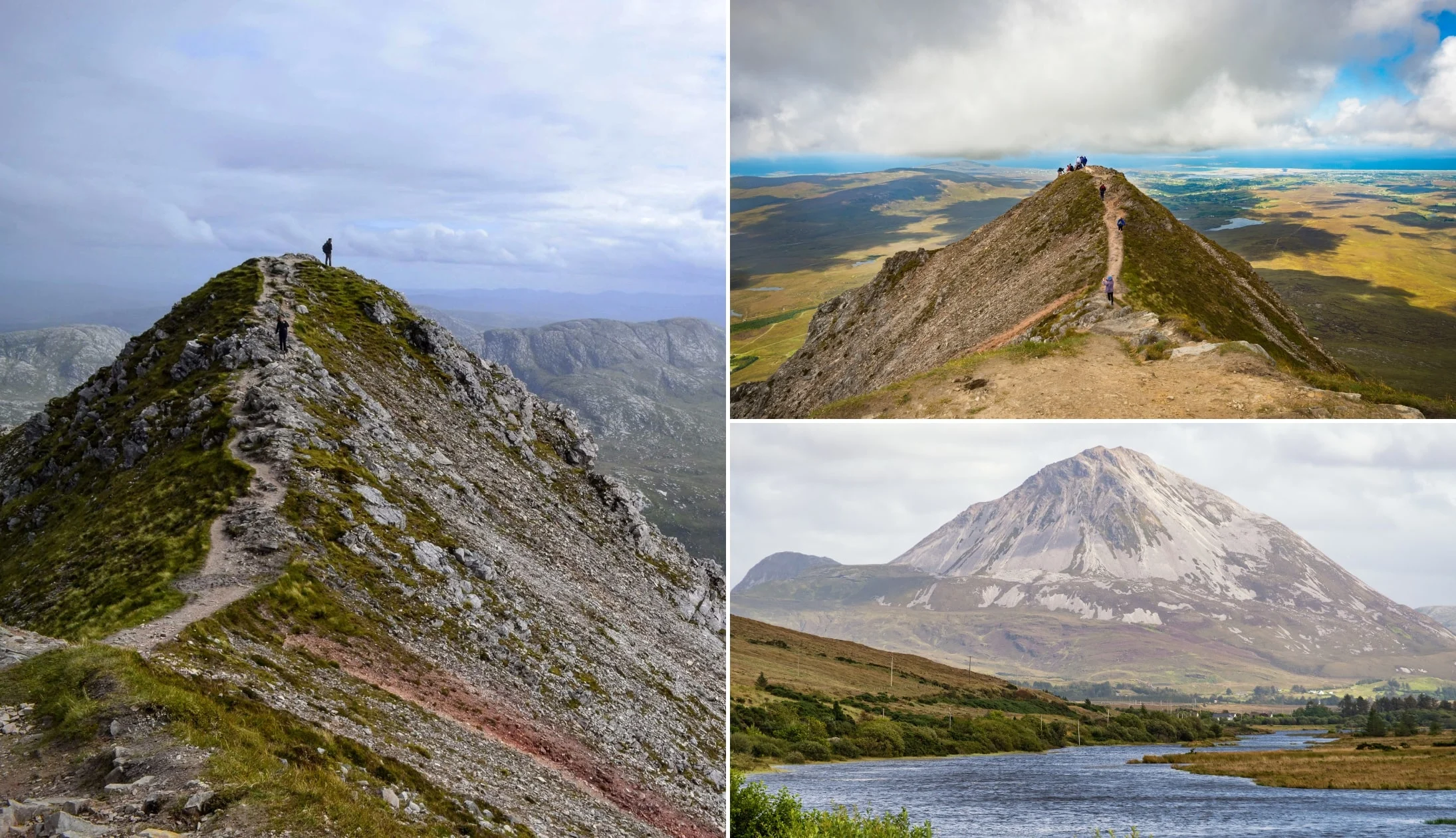
Photos via Shutterstock
If you are looking for active things to do on the Wild Atlantic Way, there’s endless walking trails to choose from.
Some of our favourites include climbing Croagh Patrick in Mayo, Diamond Hill in Galway and Errigal in Donegal.
There are shorter hikes along the Cliffs of Moher in Clare and the Slieve League Cliffs in Donegal or longer hikes like the multi-day Kerry Way walk around the Iveragh Peninsula.
11. Unique attractions
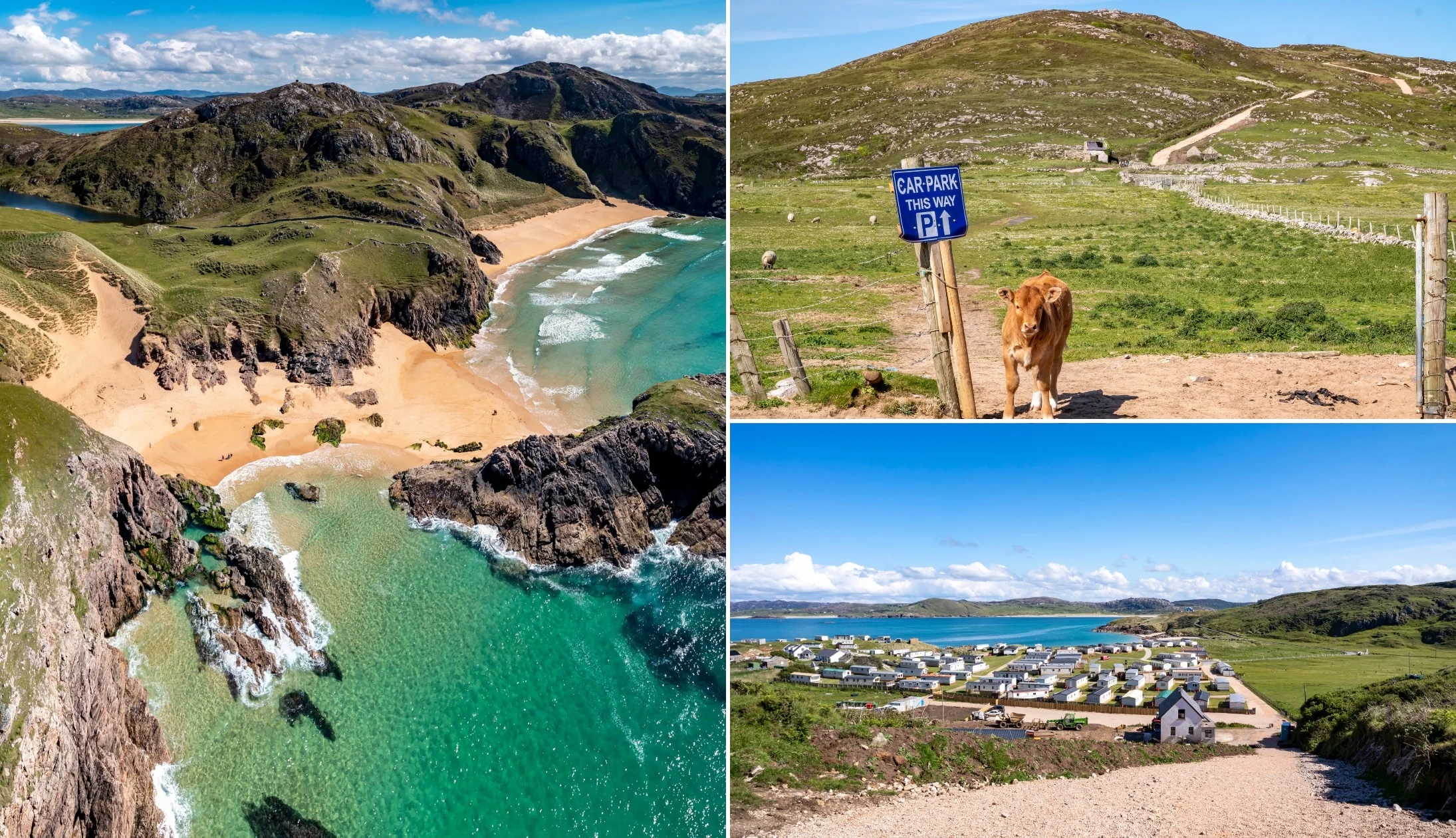
Photos via Shutterstock
It’s pretty cliché to say there is nowhere in the world like the west coast of Ireland, but it is also true. Dún Aonghasa fort on Inis Mór is a bronze age fort that sits at the edge of a 100m cliff towering above the Atlantic.
Murder Hole Beach in Donegal sounds like a place you would want to stay away from but is actually an incredible hidden gem.
Fastnet Rock off the coast of Cork is also known as Ireland’s Teardrop as it was the last piece of Ireland immigrants saw as they sailed away to America.
This tiny rock in the Atlantic Ocean somehow has a lighthouse built into it that has been guiding ships to shore since 1854. These are just a handful of the unique spots along the Wild Atlantic Way.
12. Beaches galore
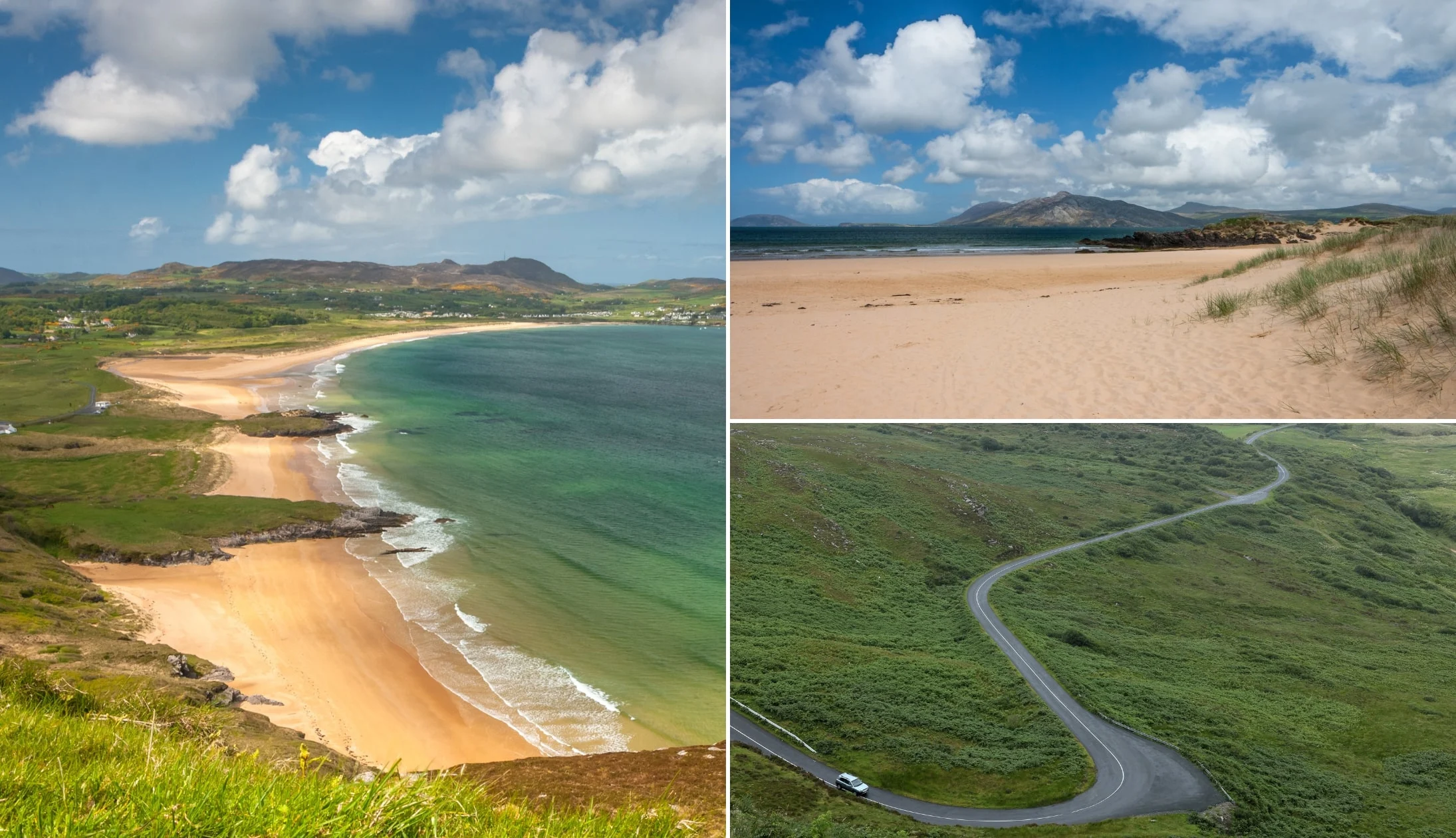
Photos via Shutterstock
No shade to the Irish Sea, but the beaches along the Atlantic Ocean are the best in Ireland. From long sandy beaches like Inch Beach in Kerry to smaller sheltered Allihies Beach in Cork, the west coast is covered in beautiful places to swim, walk and enjoy the seaside.
Surfers flock to Lahinch Beach in County Clare and Strandhill Beach in Sligo while swimmers enjoy the plethora of Blue Flag beaches that span the coastline.
As of 2023, there are 64 Blue Flag beaches along the west coast of Ireland.
13. Unexplored corners
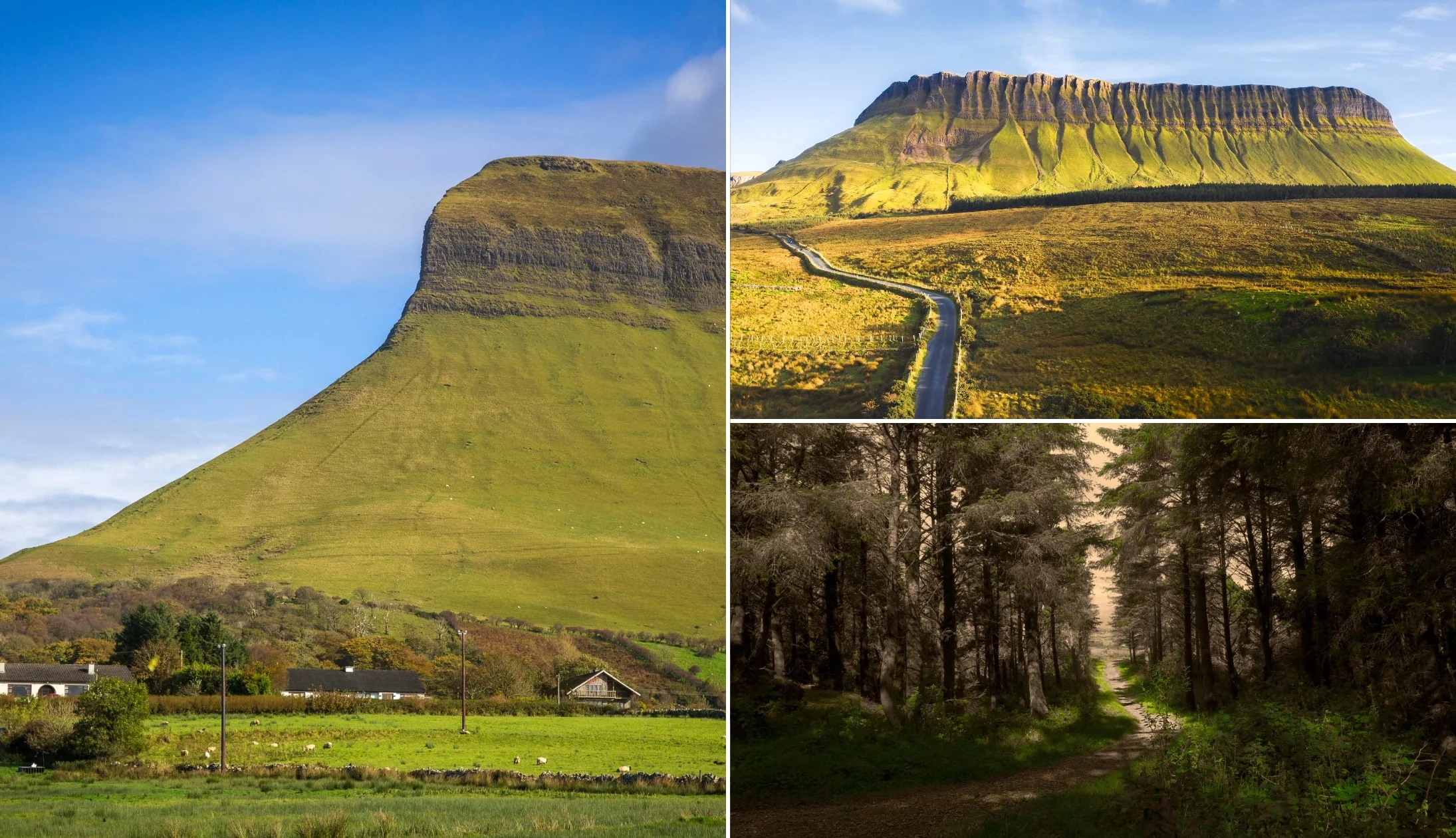
Photos via Shutterstock
Cork, Kerry, Galway and even Donegal are popular tourist destinations with incredible beaches, hikes and historic sites. But some of the less popular spots along the Wild Atlantic Way have just as much to offer.
While Leitrim might not be the best destination for beach goers due to the fact it only has 4.7km of coastline, the villages along the Shannon like Leitrim and Carrick on Shannon have a lot to offer.
Most visitors simply drive by Ben Bulben in Sligo but the Ben Bulben Forest Walk is worth the 2 hour trek to give yourself the time to take in this unique mountain.
The Wild Atlantic Way gives you the opportunity to visit places most people wouldn’t otherwise stop at, we strongly encourage you to take that opportunity.
14. Pristine peninsulas

Photos via Shutterstock
Another of the more overlooked things to do on the Wild Atlantic Way is to explore the peninsulas that rarely make it onto the guide of shiny handbooks.
One of the reasons the Wild Atlantic Way is so long is because it is not a straight shot along the coast, the west coast of Ireland undulates with peninsulas from Sheep’s Head peninsula in Cork all the way north to Inishowen Peninsula in Donegal.
These quiet and unspoilt areas are wonderful to explore and are often dotted with secluded beaches and incredible look out points. Rosguill in Donegal is one such peninsula with incredible views of Sheephaven Bay and the sandy strand of Trá na Rossan.
15. The drives
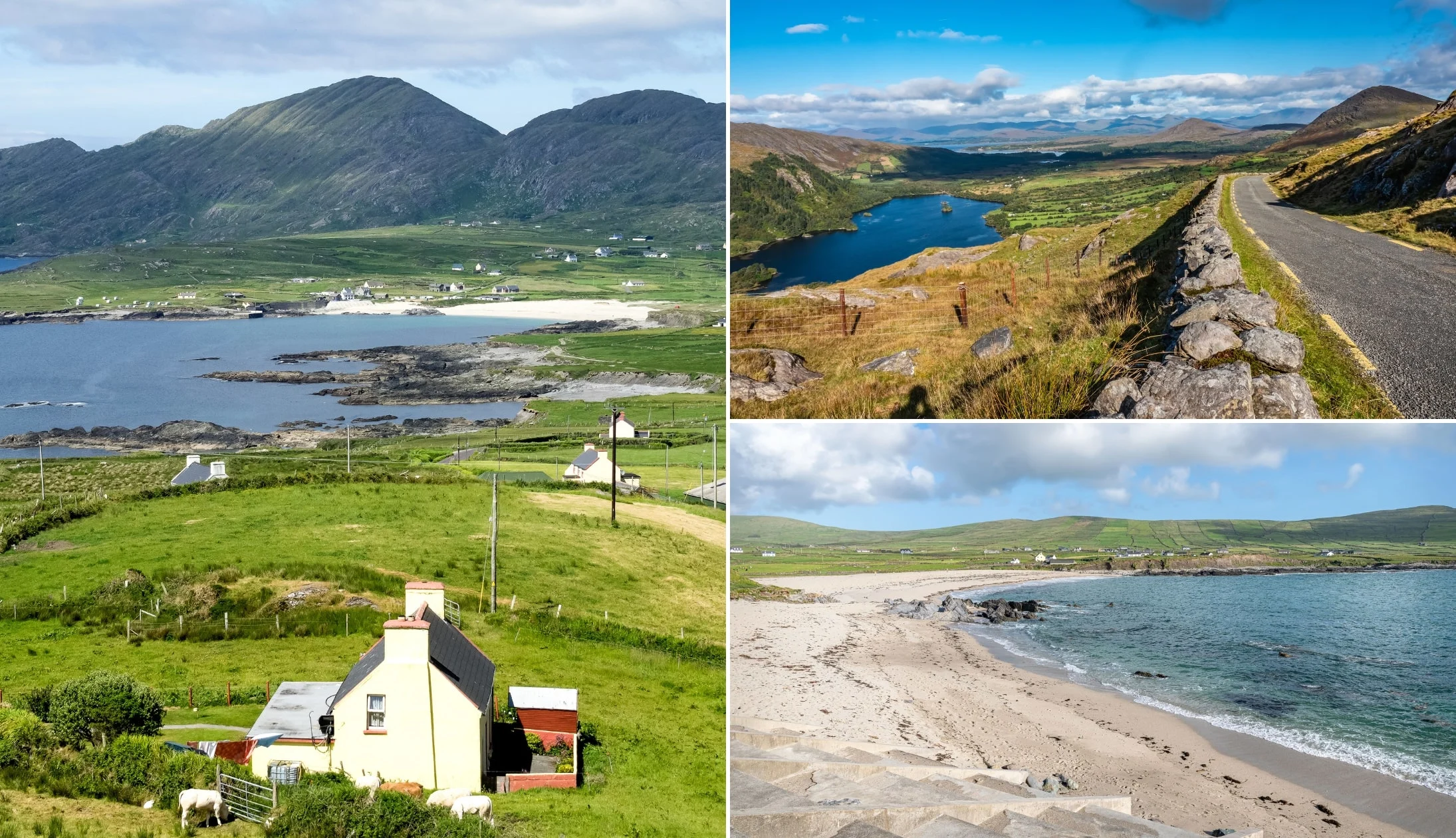
Photos via Shutterstock
If you turn off the Wild Atlantic Way there are many other incredible (and shorter!) drives around the west coast that you can complete in a day or two.
The Ring of Kerry, arguably one of the most popular drives in the country, is one such drive that takes you around the Iveragh Peninsula, highlighting some of the natural and historical wonders of the region.
In Cork you have the Ring of Beara around the Beara Peninsula, an incredible rural area with sweeping views of Bantry Bay and Kenmare Bay as well as a stop at Ireland’s only cable car.
FAQs about places to visit on the Wild Atlantic Way
We’ve had a lot of questions over the years asking about everything from ‘What are good things to do on the Wild Atlantic Way with kids?’ to ‘Where to go when travelling solo?’.
In the section below, we’ve popped in the most FAQs that we’ve received. If you have a question that we haven’t tackled, ask away in the comments section below.
What is the best part of the Wild Atlantic Way?
Best will be subjective, but my favourite places to visit on the Wild Atlantic Way are Achill Island, the Doolough Valley and Valentia Island off the coast of Kerry.
What are some unique things to do on The Wild Atlantic Way?
There’s endless unique attractions on The Wild Atlantic Way, from Dún Aonghasa Fort and the Wormhole to Murder Hole Beach and Skellig Michael, there’s plenty to choose from.

